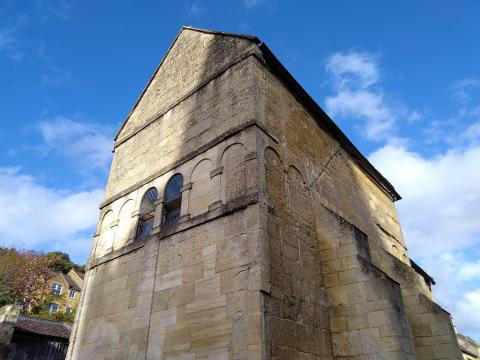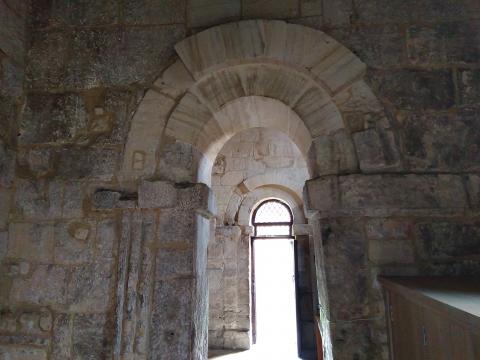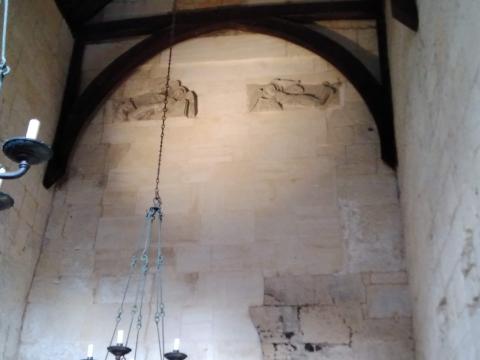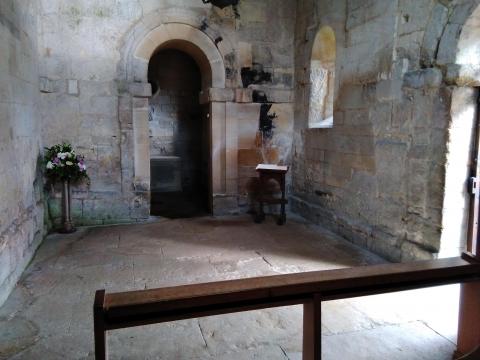St Lawrence's Church, Bradford-on-Avon

My uncle and I called at the ancient church of St Lawrence in the pretty Wiltshire town of Bradford-on-Avon. This is one of those remarkable churches which survived from the Saxon period, largely intact. Like other survivors from those times, it seems disproportionately tall in relation to its narrow width. As most Saxon buildings would have been squat, wooden affairs, this tall, sleek church rather has been rendered rather special. Furthermore, its tallness may well have been a reminder of its connection to the heavenlies, similar to a later generation’s penchant for tall steeples.

The doors are narrow. In days when armed Vikings of pagan theology were inclined to go around looting and torching churches (though if this is tenth-eleventh century, such raids were much reduced), narrow doorways through which large, axe-wielding thugs found it awkward to pass would have been no bad thing. Furthermore, there are no windows at ground level. Light streamed in from above, which was safer.

High in the nave’s east wall, a pair of carved angels are found, conveniently illuminated by an electric spotlight. They are depicted swooping about, reminding any worshippers in the nave that their prayers and devotions were an earthly reflection of the more eloquent proceedings taking place before God’s throne.

Note the wall blocking off the chancel (with its altar) and the nave, where the congregation would have assembled, standing, to observe the parson minister within. The separation between the two (nave and chancel, congregation and priest) belies the doctrine of the priesthood of all believers, and relegates the worshipper to mere observer of priestly spectacle rather than participant and partaker. Nevertheless, it is a reminder that to worship is to enter the presence of God Himself, an activity in which the world’s worries and cares are eclipsed by eternal truth.
A larger, and slightly later, parish church sits just across the road. These smaller, narrower and darker Saxon churches were generally torn down, their stones recycled. I suspect this one was put to secular use as a home or barn, which saved it from demolition. Much can be learned from old churches. May they make us wise.

- Log in to post comments


 Sunday Worship 10.45am & 6.00pm
Sunday Worship 10.45am & 6.00pm